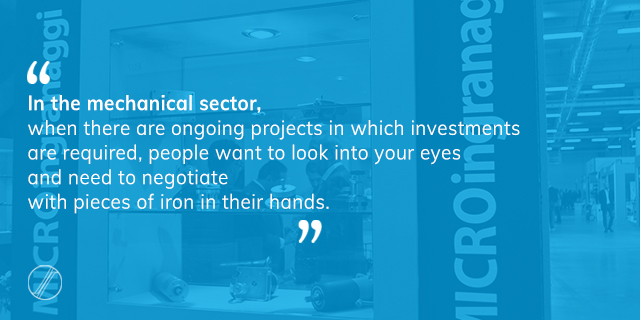I think everyone of you has a clear and unequivocal answer to this query. An answer based on one’s own experience and one’s personal modus operandi.
Well, as you may expect, I have one too. Let me explain.
Today, as never before, we have to be as multitasking as possible, at the workplace and in our personal life.
Rapid thinking and reactions: these are major prerogatives not only for the new generations but, by and large, also for all those who live in today’s society.
And what is one of the consequences of all the stimulations we are constantly subjected to? Which promptly slow us down, obliging us to constantly switch, not only from one activity to another, but also from one action to another.
When we think therefore of ways to organize our work load better (and also our private life, if so inclined),
the key aspect, in my opinion, is to ensure that every activity is driven by method.
Does that seem obvious to you? Well, in actual fact, it isn’t and if this does not happen (something that unfortunately I witness only too often), the consequences can be truly unpleasant.
Let’s take a practical example. As you know, MICROingranaggi manufactures high-precision mechanical and electro-mechanical components. For each part we produce, we usually draw up a data sheet with all the key information required (on which machine the part was processed and using which settings, how often and what must be measured and checked during quality control activities, and so forth). But why do we do this? Because if we didn’t, every time we come across a product part we have already processed (or one very similar), we would have to repeat most of the work again. Without forgetting that the possibility of errors occurring would rocket.
I realize that for many of you this procedure may seem rather anomalous, for others even excessive but, in actual fact, it is one of the key fundamental cornerstones our organization has endeavoured to implement for many years now, and we are proud to say that the results have been outstanding.
In my mind, this same logic (applied to the data sheets) should be applied across the board to all activities throughout the company.
In short, whoever works must have a specific modus operandi. A method that must naturally be both functional and functioning.
From a clerk to a warehouse operator. From a technical expert to an accountant. As far as the chief operating officer.
A modus operandi on how to plan daily operations and organize them to avoid “missing bits along the way”. Or one focused on target-based operations, which minimizes switching from one activity to another, and so forth.
We must also bear in mind that a method is rarely perfect, whatever it is. Generally speaking, there is always something that can be improved.
There are many methods out there, and we don’t all have to use the same one (even if we are performing the same activity): what is most efficient for me, may not be for you, and vice versa. The key objective is to choose one that works for you.





